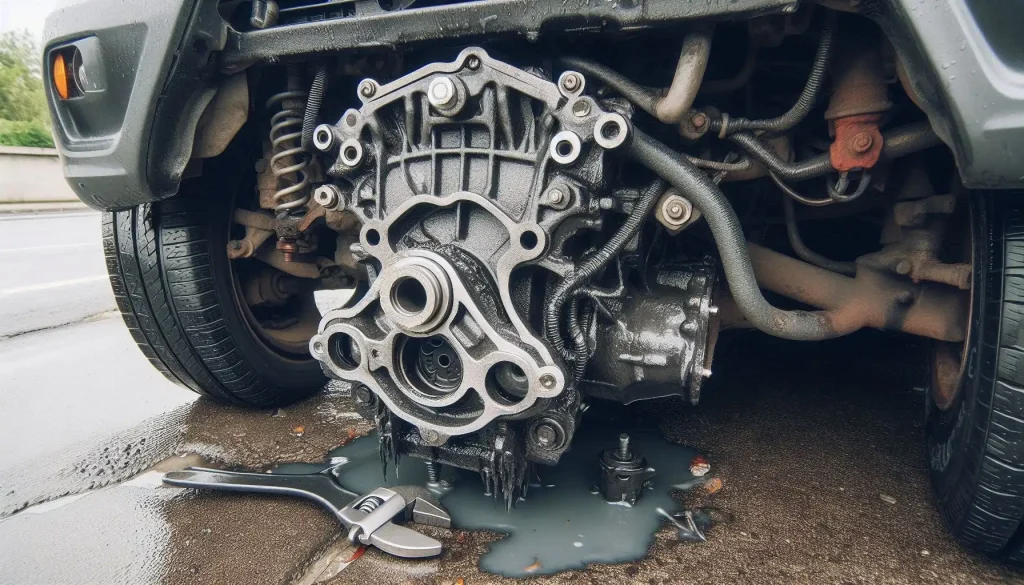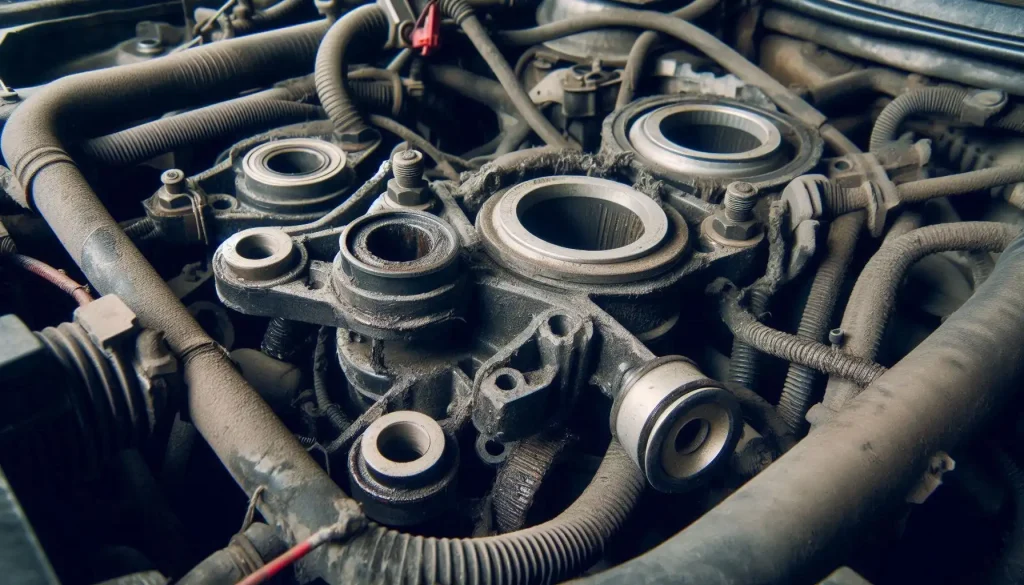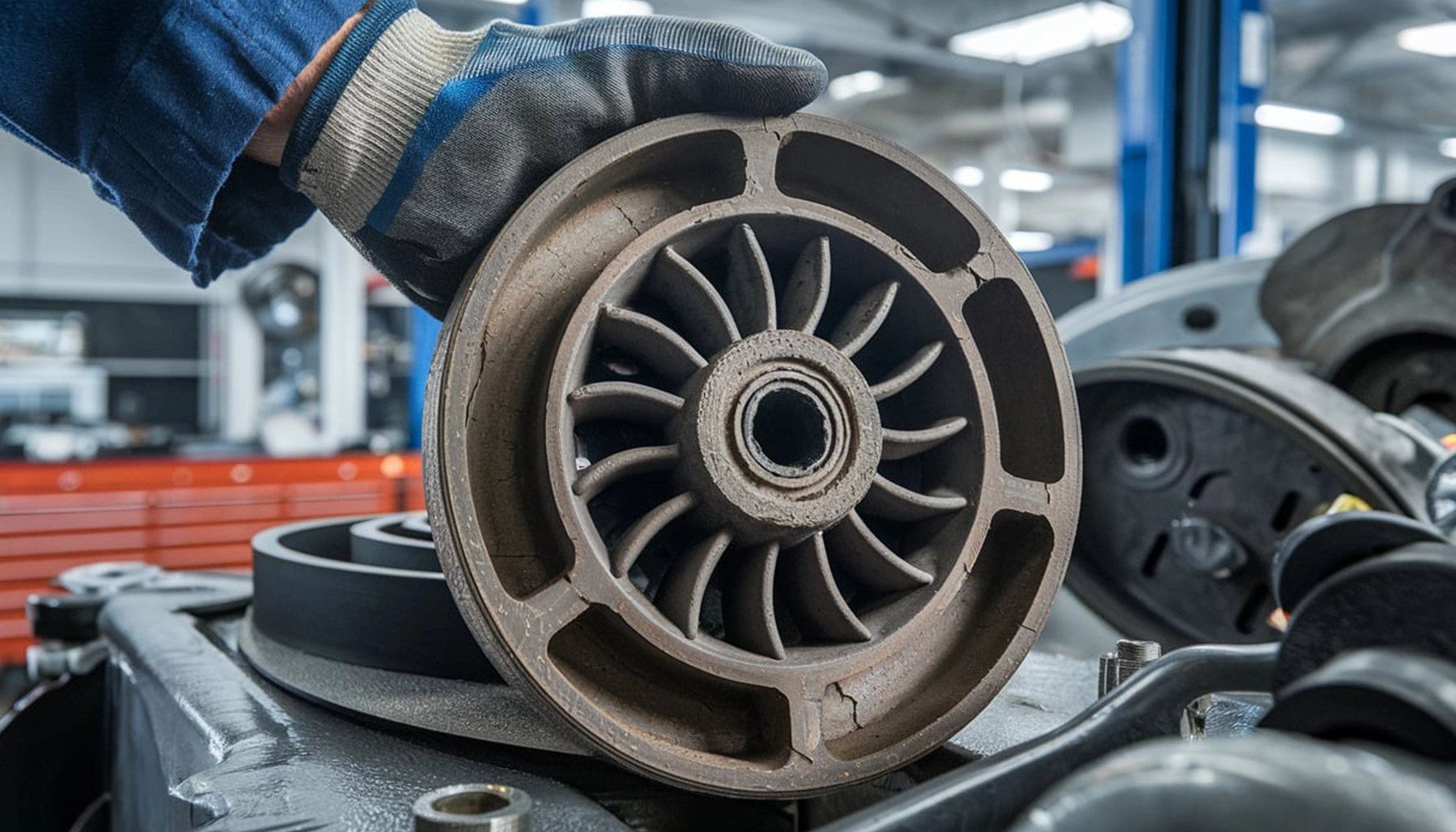Yes, a bad engine mount or transmission mount can disrupt the operation of the transmission and potentially cause severe problems for your vehicle over time. Regardless of whether your car has a manual or automatic transmission system, the severe jolts caused by the failure of the engine and transmission mounts while driving can be a significant factor in transmission failure.
In reality, the transmission mount is a small and inexpensive mechanical part. However, it carries a significant and impactful responsibility in the operation of your vehicle. The transmission mount is composed of steel bases and rubber. It connects the transmission to the vehicle’s chassis using metal bases, screws, and nuts, and in some cases, through welding.
Why does a bad engine mount cause transmission failure?
To put it simply, the car’s engine is one of its moving parts and, therefore, shifts from its place when operating. Additionally, the engine and transmission are interconnected, and any movement of the transmission shakes the engine. Hence, there needs to be a component in place to keep the engine stable; otherwise, you will experience a lot of jolts and vibrations inside the car. This crucial component is the engine mount, which you will learn about its function, the signs of failed and lousy engine mount, and how to replace it in this article.

As its name suggests, the engine mount is a part that firmly holds and mounts the engine in place and prevents its unwanted movement. In most vehicles, there are three or four engine mounts, one of which has the transmission, and the rest are for holding the engine.
One part of the engine mount is bolted to the car’s body or frame, and the other part holds the engine itself. An engine is a source of vibration, as it has many moving and rotating parts. The job of the engine mount is not only to keep the engine in place but also to reduce the sensation of vibration created by the engine inside the vehicle.
Therefore, it is better to replace it as soon as you notice problems related to a bad or damaged engine mount to prevent any damage to your vehicle’s transmission system.
How to tell which motor mount is bad?
If you encounter any of the following issues, your engine mounts are bad, and you should replace them:
- Excessive noise
- Severe vibrations
- Improper alignment and adjustment of the engine mount
- Broken radiator hoses and belts
- Damage to the engine that has impacted the engine mount or its connection to the transmission system
- Worn-out mounts that have reached the end of their useful life
- Age and constant, repeated impacts
- Poor driving style and excessive cornering or falling into problematic potholes
- Heavy accidents that cause the engine mount to break
- Engine oil leakage
One of the most common signs of a bad engine mount is the unusual vibration of the car while driving. If you notice a lot of vibration or loud noise after starting the vehicle, there’s a good chance the engine mount has a problem and might need replacement. If the lousy engine mount is holding the engine lousy, it cannot prevent the vehicle’s vibration. The more vibrations, the louder the engine noise, and if it continues, it will damage the engine.
On the other hand, when the engine mount is completely worn out or broken, and it’s time to replace it, it often manifests itself with a significant jerk when changing gears. Usually, when you accelerate, turn, or brake rapidly, you feel this jerk more.

Another common sign of a bad engine mount is the sound of a hit or knock coming from the engine compartment. This sound is caused by excessive engine movement or contact with other parts.
Like any other part, the engine mount has a certain lifespan and gets worn out or damaged over time for various reasons. Any corrosion, crack, or deformation in this part indicates that the engine mount needs to be replaced soon. The rubber parts of the engine mount may be cracked or flaking. In such a situation, it is better to replace the engine mount as quickly as possible.
Why does the engine mount fail sooner than usual?
There are several reasons why the engine mount fails sooner than usual. Some of them include:
- Incorrect installation of the engine mount
- Wear and tear of the engine mount
In other words, the engine mount must be installed correctly in its place to work well and last longer. If the engine mount is not installed correctly, it is exposed to friction and collision with other parts, and its lifespan shortens. Therefore, it’s better to leave this task to a mechanic.
Also, one common reason for engine mount failure is that it has aged and become obsolete. The engine mount usually has rubber parts that wear out over time and lose their elasticity. The older this part gets, the more pressure it receives, and therefore, the number of small cracks in it increases, which will cause the fluid inside it to leak.

Unfortunately, some people drive very badly and damage the car themselves. Improper clutch use or putting pressure on the gears can easily damage the engine mount. Sometimes, a heavy accident can damage or displace the engine mount, and of course, engine oil leakage on the engine mount can cause its rubber to soften and get damaged.
Final Thoughts
The engine mount is a part that holds the engine in your car. In most vehicles, an engine and transmission are bolted together and held by three or four mounts (bases). The base that holds the transmission is called the transmission mount, and the others are called engine mounts, which, if damaged, can have terrible consequences for your vehicle. Although the engine mount is a relatively inexpensive part and may commonly fail, its failure can have other side effects for you. Therefore, it is better always to ensure the health of this part in your vehicle.



